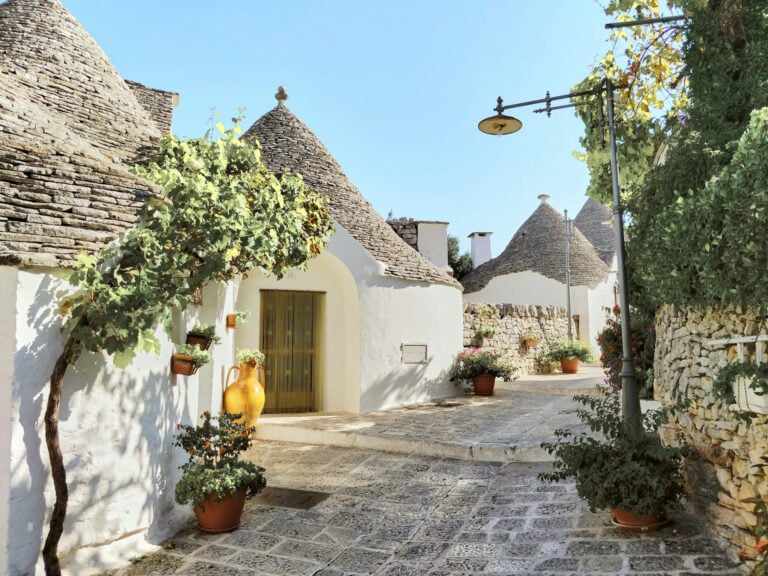
Go World Travel is reader-supported and may earn a commission from purchases made through links in this piece.
We’ve all heard of Rome, Milan, Naples and the magical Amalfi Coast, but today I’m taking you to a one-of-a-kind location in the “heel” of the Italian “boot.” I am taking you to Alberobello, Italy’s hidden gem.
Architectural wonders of the trulli houses with their white facades, pastel cacti, narrow streets and witty-interesting history and probably the most charming tax scam you’ve ever heard of, that’s Alberobello. But we’ll talk about that later.
Alberobello is in Southern Italy, in the province of Apulia (Italian: Puglia) between Brindisi and Bari.
Italy borders some of Europe’s most popular countries, including Austria, Switzerland, Slovenia, France, San Marino and the Vatican, so don’t hesitate to combine it with some “across the border” attractions.
The official currency is the euro, and the official language is Italian. English will be perfectly fine, but knowing “che bello” is essential because it will be used frequently.
Italy also has access to the beautiful Adriatic Sea. Long story short, here in Europe, we say that Italy is always a good idea. So, enjoy this Alberobello travel guide, and make sure you have your passport ready.
Trulli Houses: An Escape From Paying Taxes
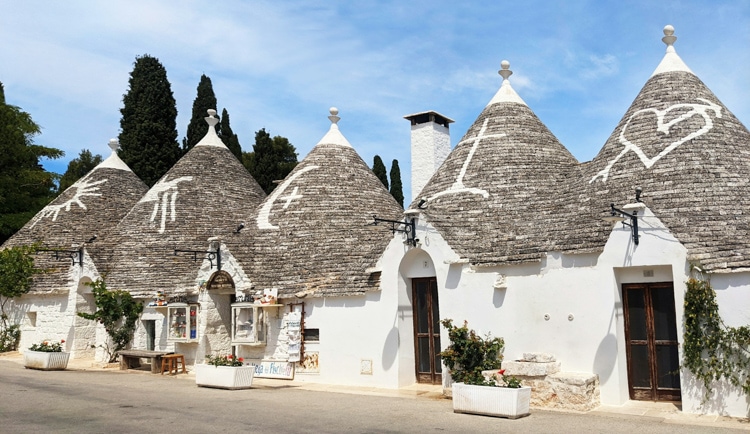
Can you believe this: Alberobello would not exist if there wasn’t that eternal human need to avoid taxes?
Alberobello’s main tourist attractions are its iconic trulli: limestone houses with conical roofs built without the use of cement or plaster. The stones are arranged in a stable structure using the drywall technique.
On some roofs, you will notice various symbols and may wonder what they represent: they are religious and superstitious symbols of good luck.
Best Tips & Tools to Plan Your Trip
However, the most crucial aspect was that trulli houses could be easily disassembled and reassembled. So, during the Kingdom of Naples, before the tax collector arrived, the residents just disassembled the place.
After he left, they would reconstruct the trulli houses again. Yes, the history of Alberobello is really interesting.
I mean, is this one of the wittiest tax frauds you’ve ever heard of?
Stay in the Trulli of Alberobello, an Architectural Wonder
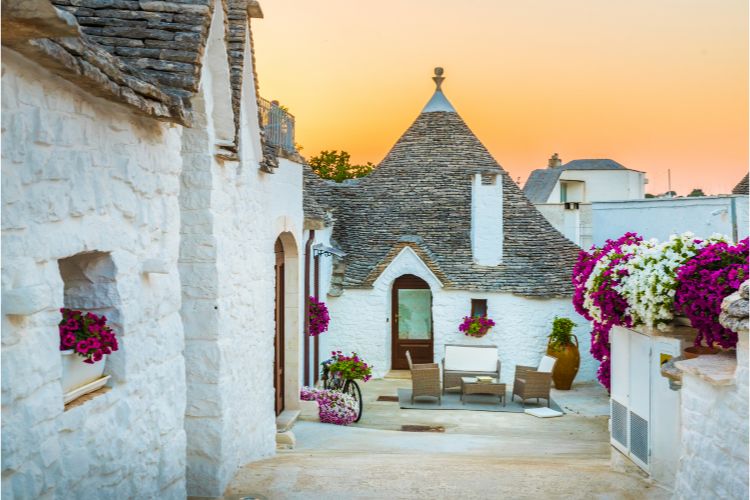
Yes, you can book a trullo (in Italian, trullo is singular and trulli is plural). In addition to being a charming experience, you will be able to say that you slept in a true architectural wonder.
Trulli are rare dwellings that have survived from the 14th century to the present. Italy designated them as heritage sites in 1909. It is illegal to build on, demolish, or construct replicas of them. Any intervention must be done by an authorized person.
In 1996, Alberobello’s trulli was named a UNESCO World Heritage Site. Also, they have unique “air conditioning”: the thickness of their walls keeps the Trulli warm in winter and pleasantly cool in summer.
Isn’t it a pretty unique place to stay when traveling?
Take an Apulian Cooking Class At a Local’s Home

Is anything more Italian than pasta? Okay, perhaps pizza. Or espresso. But you get the point.
That is why I challenge you to roll up your sleeves and take a cooking class. At a local’s home, with wine or coffee in one hand and the dough in the other, you’ll learn how to make your own maccheroni, gnocchi, or orecchiette, like the Italian nonnas do.
I mean, just imagine how excited your friends will be when you invite them over for a pasta dinner you learned to prepare in Italy. If I were your friend, I would definitely come.
Walk Through Rione Aia Piccola (Small Yard District)
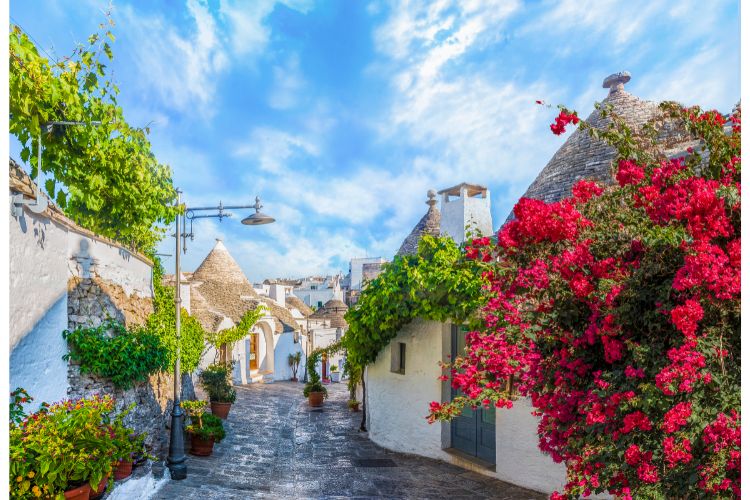
What about a less-touristy and more authentic Alberobello area? Sounds almost impossible, right? Well, not if you go to Rione Aia Piccola.
This quiet district has 400 trulli, which may not appear so special at first., But here you will be greeted with Alberobello in all its glory, without many tourist shops and restaurants.
This is a residential area where you can also rent accommodation. You will be surrounded by authenticity, white trulli, pastel-green cacti and colorful flowers. Perfect, right?
But before you leave Rione Aia Piccola, there is one more thing you should do…
Visit Terazza Belvedere (Santuario di Santa Lucia)
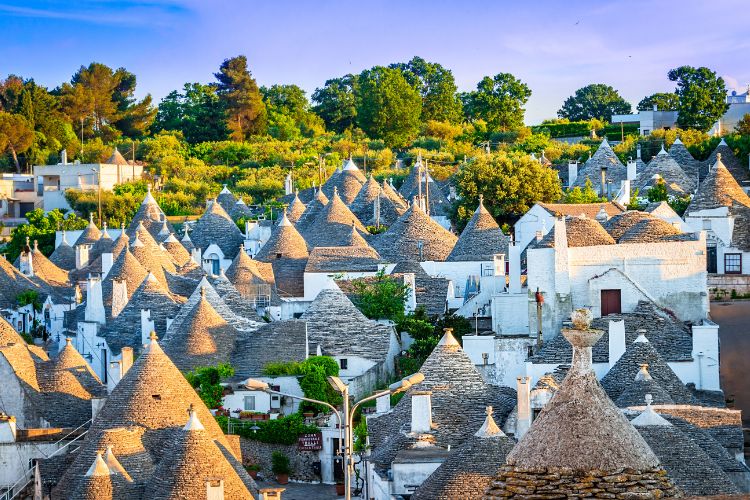
Before leaving Rione Aia Piccola, take in the beautiful panoramic view with many white facades and gray roofs. This Disney fairytale view awaits you at Terazza Belvedere, the most famous viewpoint.
It is located on the edge of Rione Aia Piccola, and the houses you will see are part of the iconic district of Rione Monti, which is next on this list.
After enjoying the panoramic view, descend the Stairway of Love (Scalinata dell’Amore), a romantic staircase decorated with hearts and poetic lines. So Italian, right?
Visit Rione Monti
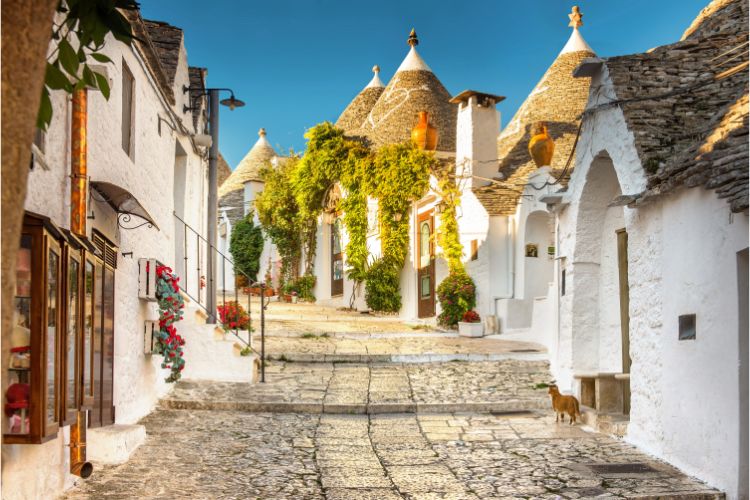
Although it is nice to experience the authentic part of Alberobello, you will want to stroll among the real abundance of white facades. More than 1,000 trulli await you in Rione Monti, making you wonder if you’re in Greece or Italy.
In this historic center of an old town, you will find the largest number of tourists, cafes and souvenir shops.
You can schedule a walking tour because there is so much to learn. Or you can get a gelato and wander around, which is perhaps the best way to discover Alberobello.
All roads lead to the trulli anyway. And that’s the point here, right?
Visit Trullo Siamese and Learn It’s Love Story
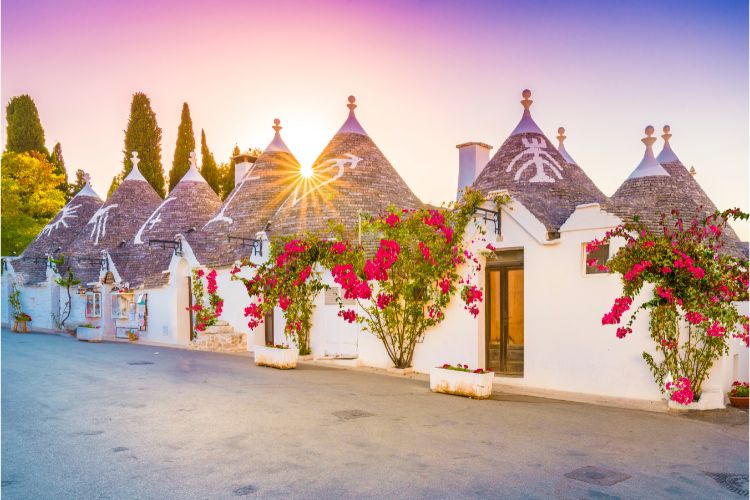
Ahh, love. It creates wonders, but it also starts wars. And that’s how Trullo Siamese became famous.
It is separated into two parts. Why? Because, according to legend, two brothers lived there but both fell in love with the same girl.
She chose the younger one, and because he did not want to leave the trullo, which legally belonged to him as much as to his older brother, the trullo was divided into two parts, each with its own entrance facing a different street.
And that’s how this small town got one of its most iconic tourist attractions. It is a must-see, and entry is free. However, you can leave with cute souvenirs from their souvenir shop. In that case, it’s not free anymore, I know.
Visit the Basilica of St. Cosmas e Damiano
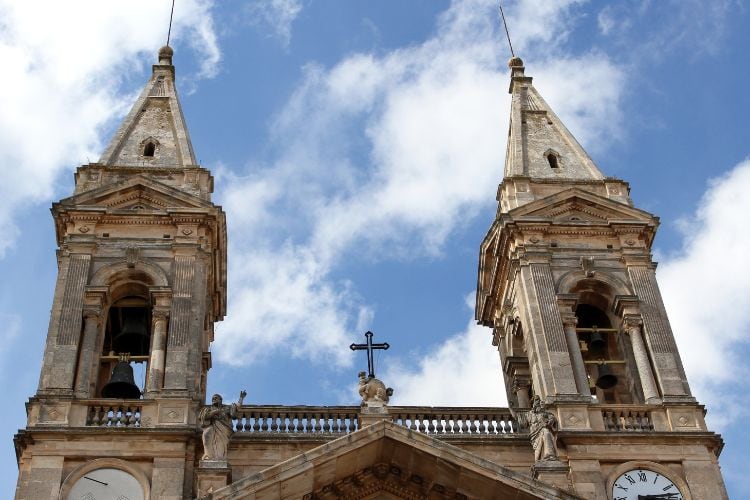
When at Alberobello, go to the Basilica of St. Cosmas and Damiano. It is a 17th-century Roman Catholic church with a variety of artwork within, including beautiful frescoes with pictures from Sant Cosma and Sant Damiano’s lives.
No worries, it will be easy to find because it stands out among the whiteness of trulli with its warm golden-brown color.
Read More: A Retreat to the Tuscan Oasis of Borgo San Felice, a Medieval Hamlet Turned Resort
Trullo Church of Saint Anthony of Padua (Sant’Antonio)
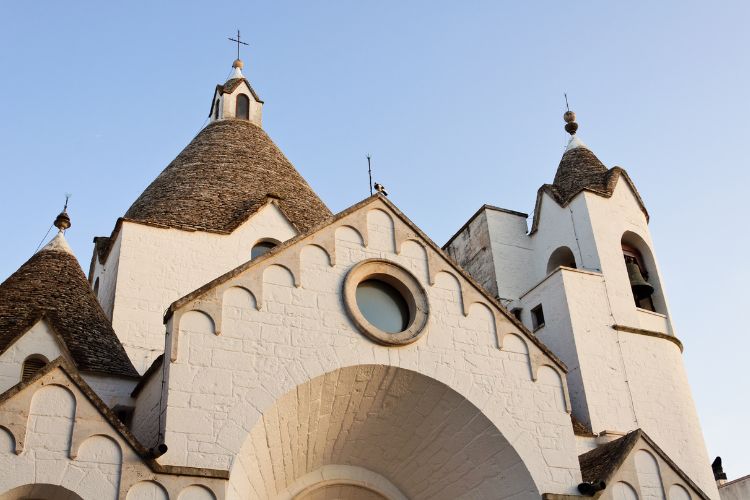
The trullo Church of Saint Anthony of Padua is the only trullo church in the world. Amazing, right? But do you know why?
The Church of Saint Anthony of Padua opened in 1927, and because modern construction was prohibited in the Rione Monti since 1910, the church had to be built in the classic trulli style.
So, it’s obviously a must-see, and while you’re there, come in and check out beautiful frescoes.
Visit Trullo Sovrano, the Museum in the Largest Trulli
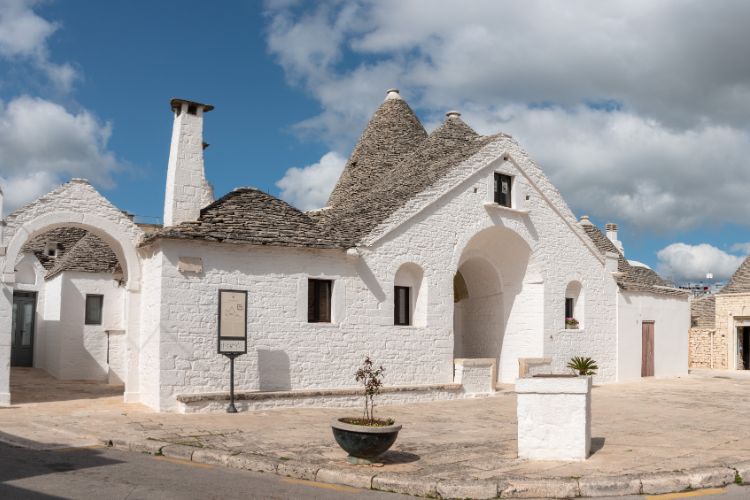
Can you imagine what it would be like to live in houses that are ready to be dismantled at any moment? In fact, you don’t need to imagine; just visit Trullo Sovrano, Alberobello’s largest trulli.
This was formerly the home of a wealthy priest family, but it is now a museum where, for 2-3 dollars, you can see a true image of life at the time.
You can learn interesting facts on the educational boards and see authentic trulli rooms from 1800. Cool, right?
Buy a Souvenir: From Mini Trulli to Olive Oil
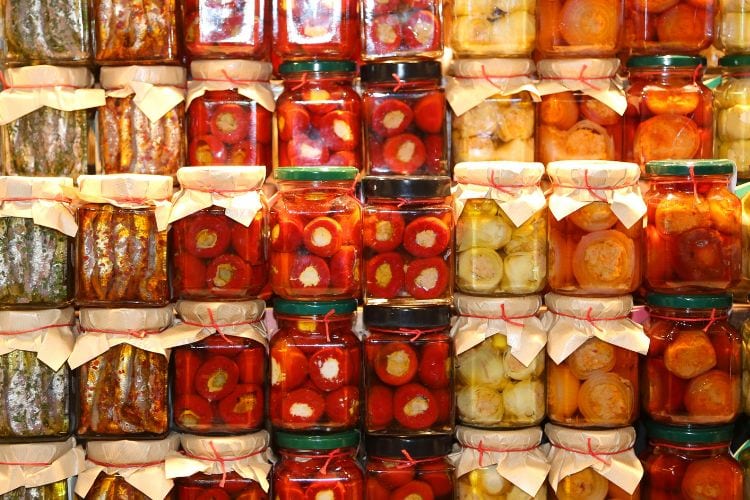
Of course, where there are a lot of tourists, there are even more souvenir shops. The most popular are mini trulli, but there are also craft markets throughout the peak season (which runs from April to October).
If you prefer food-related souvenirs, Alberobello is famous for its excellent olive oil, but local wines and honey are also wonderful options.
Also, check out the clothing boutiques. We all know that Italians are at least as good at fashion as they are at food.
Visit Casa d’Amore
Another must-see is Casa d’Amore, the house of Francesco d’Amore. He is significant in Alberobello’s history as one of the key figures in putting an end to feudal tyranny.
This popular tourist attraction was built in 1797. Another reason to visit it is that it was the first building in the area that was not constructed using the trulli method; plaster was used, and the house is two floors tall.
Therefore, it was declared a national monument in 1930. It doesn’t stand out too much, so make sure not to miss it.
Enjoy Traditional Puglian Cuisine

Pugliese orecchiette pasta, burrata cheese (maybe with truffles?), panna cotta, focaccia, local wines, Pasqualino sandwiches (tuna, capers, salami, cheese) and some of Italy’s best olive oil—you won’t go hungry here.
For a truly unique dining experience, arrange a meal in an authentic setting in the host’s home, surrounded by a local family and a warm atmosphere while the homemade food just keeps coming.
See how an Italian places homemade pasta on your table, with their typical hand gesture and with an Italian accent: Bon Appetit!
Read More: Blissful Mountain Escape at ADLER Spa Resort DOLOMITI in the Italian Alps
Perfect Day Trips: Locorotondo, Martina Franca or Matera
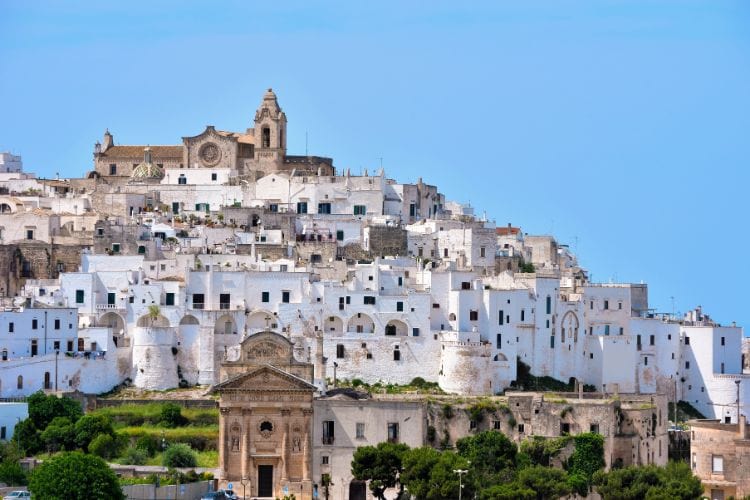
If you need a break, take a road trip to Polignano a Mare (29 kilometers away) and swim in the Adriatic Sea, surrounded by 24-meter-high rocks.
If you can’t get enough of white facades, consider a day trip to beautiful Ostuni (43 kilometers away), located on the Adriatic Coast. Its snow-white facades contrast perfectly with the blue Adriatic Sea.
Similar and equally magical is the pastel white Monopoli (19 km away). I recommend you set up a full day for it (although I believe you will want to stay much longer). Another infinite number of white facades can be found in the beautiful Locorotondo (8 km away) in the Itria Valley.
If you enjoy this white style, take a day trip to Martina Franca (12 km away), and if you want something both similar and unique, visit the magical Matera (69 kilometers away, but trust me, it will be well worth it).
And if you are a hedonist like the Italians, book one of the guided tours of the Valle d’Itria wineries. Because, you know, as the Italians say: “dolce far niente!”
Read More:
- Italy Travel Guide
- Puglia Is Italy at Its Best
- Guide to the Best Places to Visit in Puglia, Italy
- Trulli Scrumptious: A Guide to Family Travel in Puglia, Italy

